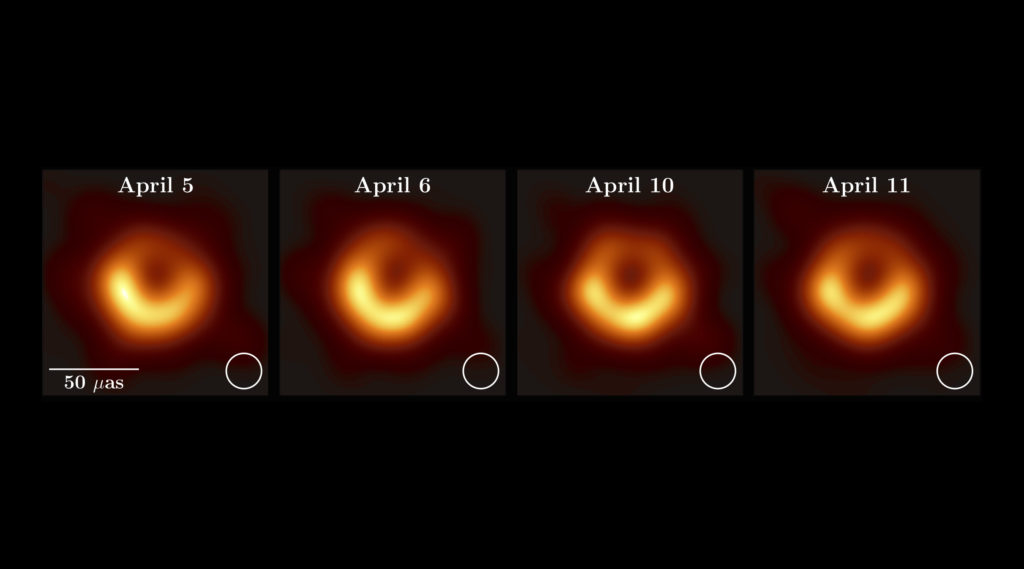
Four different images of the supermassive core of galaxy M87 using the Event Horizon Telescope.
Credit: EHT Collaboration
Posted April 24, 2019, updated May 7, 2019
by P. LaViolette
When the Event Horizon Telescope Collaboration said they would release their first image of Sgr A* on April 15th, instead, close to this date, they announced an image of M87 that was a rework of an image published two years earlier. Still to this date, they have not released an image of Sgr A*. The core of M87 is 1550 times more massive than the core of our galaxy, hence would be 1550 times more distorted due to gravitational warping. Multiply this by the 2100 times poorer resolution achieved for a galaxy that far away and you get an image that is 3 million times less clear than what they would have seen by looking at Sgr A*. See their Astrophysical Journal article. Note the blurriness of the images shown above (posted by AAS Nova). These have not been doctored as have some images of M87 circulating on the internet. Actually, compared to the background, the central region is not that dark.
So why release this old image of M87 and not that of Sag A* which would have given the best view of our core. It appears the only reason they released this image is that it somewhat resembles what they had expected to see for the region around a black hole. But this image would be entirely distorted and a poor representation of the reality of what this region would actually look like. The ring of emission is said to be from gas circling its core. Since we are viewing the disc at an angle of 42° (Ford, et al. 1994, p. L29), none of the gas shown here intersects our line of sight to the core. So the core would appear black in comparison. The reason it is dark in the middle is that the EHT is imaging at a microwave wavelength. Hence the emission from the core would be invisible at this wavelength. Subquantum kinetics predicts that the core of M87 radiates in the X-ray and gamma ray spectral region where this telescope has no sensitivity. So this region appears dark. But don’t be fooled there is tremendous energy coming from that blackness. So the EHT Collaboration has failed to establish that this is a black hole.
This whole fiasco is so poor, Paul. Dont you think ? If I had any sympathy for them I’d feel embarrassment! How did they think no one would notice that was an old image ?. Pretty average for a supposed Cuting edge Space Agency, huh?!
Thanks for this bit of sanity, much, much needed in this age of madness and exaggeration. I’ve studied your work for a while now, I’m still amazed at the power of your Subquantum Kinetics theory and the elegance of your deductions and analysis. Here’s another take from a mainstream scientist you may appreciate for her ability to elegantly describe the impossibility of black holes. Physicist Mersini-Houghton of Chapel Hill describes an entirely new BH scenario. She and Hawking both agree that as a star collapses under its own gravity, it produces Hawking radiation. However, in her new work, Mersini-Houghton shows that by giving off this radiation, the star also sheds mass. So much so that as it shrinks it no longer has the density to become a black hole.
Yes, I mentioned about her in an earlier posting on this site about black holes.